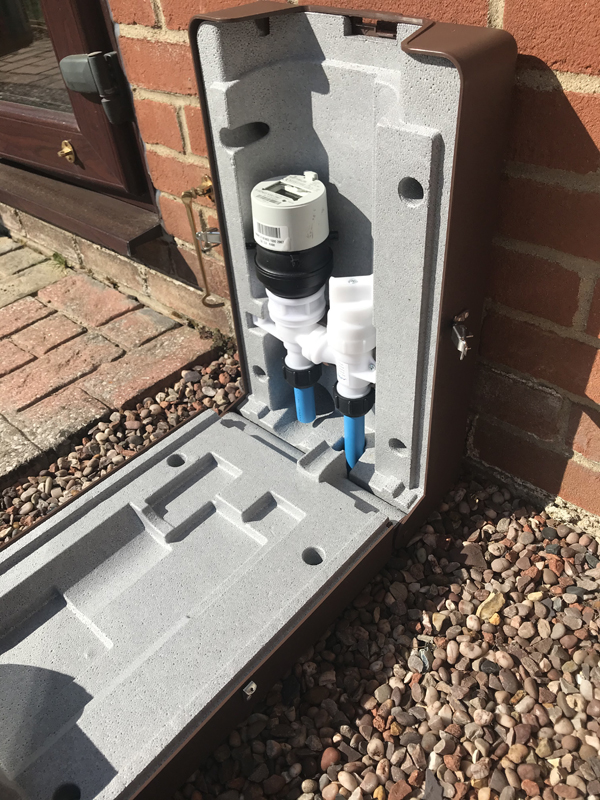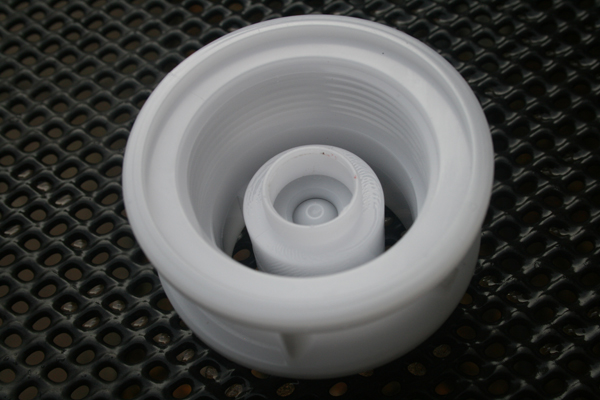If our water usage patterns don’t change, the UK will have an ongoing water deficit of 4,000 Megalitres per day by 2050. Reductions in leakage and domestic consumption are the two primary strands of water conservation targeted by Defra and the water companies.
Some areas of England are already restricting future development unless ‘water neutrality’ can be demonstrated. This requires both existing and new properties to reduce per capita consumption (PCC) to the extent that overall water usage levels do not increase.

Reduce leaks, design out joints on pipes and prepare for smarter meters
Recent research by Thames Water showed that 8% of households show continuous flow on a smart meter, indicating an undetected leak. This means that up to 25% of water supplied to domestic properties is wasted through leakage.
This leakage can be due to old and corroded lead supply pipes, but the majority of leaks originate from joints in the supply pipe. The House Building Federation (HBF) and Water UK have since 2014 issued best practice guidelines. Of the 5 prinicples, 4 relate to minimising use and leakage.
Surface mounted meter housings are a perfect solution for modern methods of construction. Meeting all the HBFs Best Practice Guidelines, the meter housing can be pre-installed along with all the internal plumbing systems, and then connected to the mains supply via and continuous, uninterrupted length of pipe.
An early adopter of the surface mounted meter housing is Portsmouth Water. Bob Taylor, CEO Portsmouth Water explained their philosophy, “Portsmouth Water’s policy of having a single joint free service pipe from mains connection right the way through to the wall mounted boundary box has certainly improved confidence around the longer-term quality of these new assets from a leakage perspective. This policy is also helpful in the context of reducing customer side leakage and emerging knowledge in this area is showing that this is a bigger challenge than our previous understanding indicated.”

Steve Leigh, Managing Director Groundbreaker, and developer of the wall mounted boundary box has over 40 years’ experience in the Water Industry. “We’ve been putting pipes in holes in the ground to protect them from frost for decades”, he explained. “Although it works, today’s new materials allow for a much better solution. Keeping pipes on the surface reduces the risk of leaks developing and allows for easy repair and maintenance. It’s just a must better method of working.”
Steve continued, “The advent of new smart metering options has also highlighted the problems of burying meters in a hole in the ground. Groundbreaker allows for a stronger communications signal strength relative to underground meter installation. Such systems have been proven to be able to be read from over 2 miles away from a single pick-up point and worldwide if linked to the internet.”
Reduce usage, a fit and forget solution
‘Over supply’ of water, i.e. water flow rates that are higher than required to provide an adequate supply, results in waste of water. Running taps when brushing teeth, showering, or rinsing cups uses more water than necessary.
Approximately 40% of domestic water usage is from bathroom and kitchen taps and showers. ‘Eco’ or water saving shower heads are designed to restrict the water flow to a single outlet are highly effective but fittings these come at a price, especially larger properties with multiple bathrooms.\

The alternative is whole site flow reduction. Fitting a device such as Groundbreaker’s NRv2 LoFlo®, at the meter regulates the level of flow entering customer premises – regardless of network pressure. As the flow of water into the premises is limited, then the amount used in ‘time controlled’ activities is also limited – but without providing a degradation of service. More importantly not requiring any intervention or behavioural change on the part of the customer, so leading to ‘natural’ reduction in consumption.
For further information on the full range of Groundbreaker products visit: www.groundbreaker.co.uk
Images © Groundbreaker
- Log in to post comments













